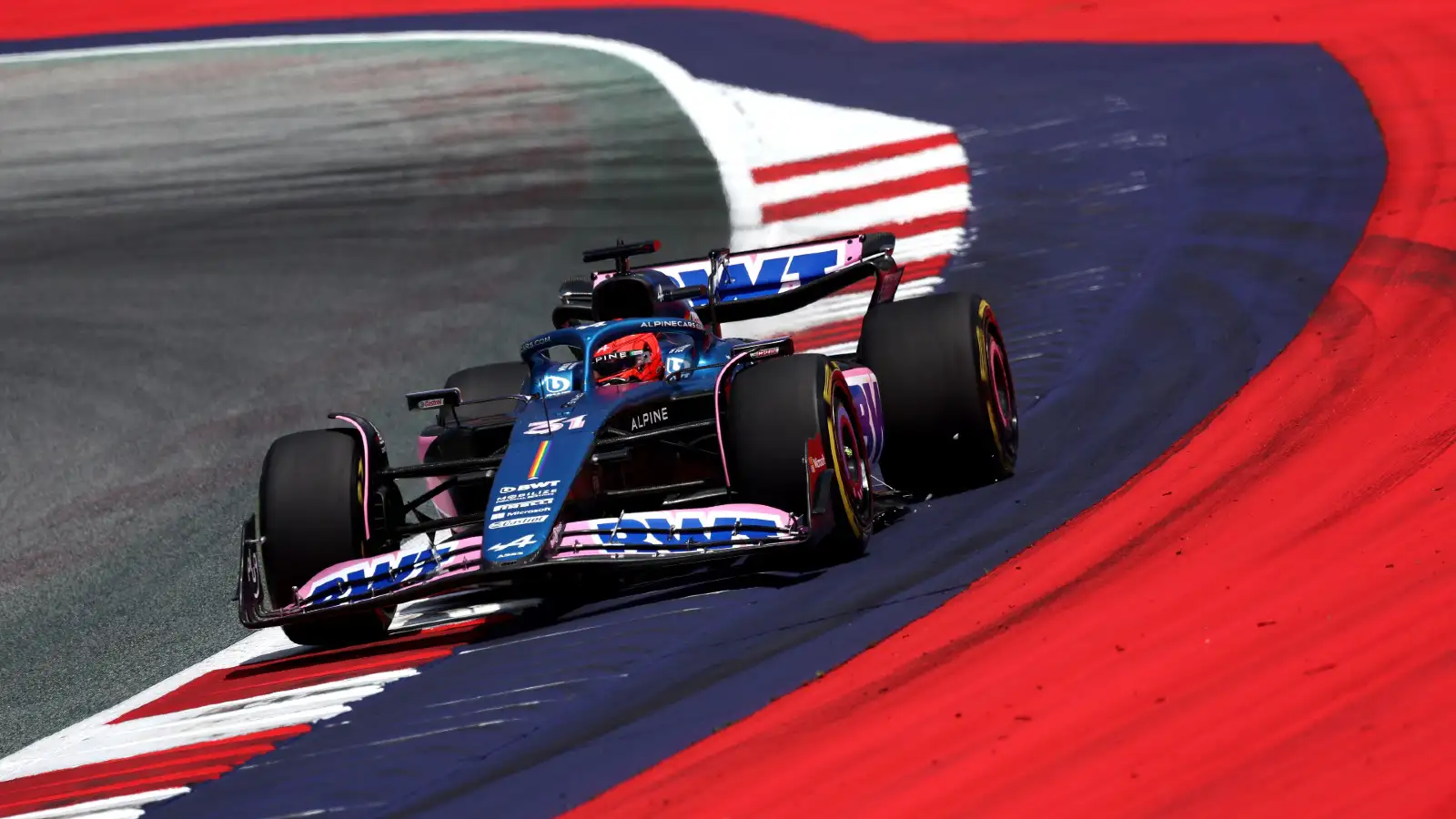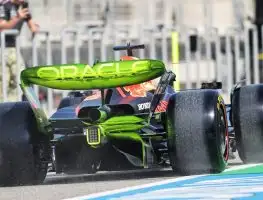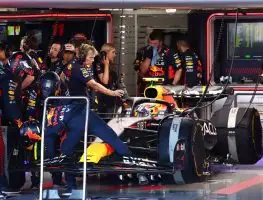Explained: F1’s track limits rules and how the FIA enforces them

Alpine's Esteban Ocon in action at the 2023 Austrian Grand Prix. Spielberg, July 2023.
Formula 1 imposes ‘track limits’ rules upon its drivers at every racetrack. What are track limits, and how are they enforced?
Formula 1’s rules regarding track limits occasionally come to the forefront of everyone’s mind, particularly at tracks where the limits results in drivers picking up penalties for exceeding them.
At the 2023 Austrian Grand Prix, along with seven drivers picking up in-race penalties for breaking the track limits rules, a further 12 penalties were handed out to eight drivers after the chequered flag – such was the sheer volume of incidents during the race itself.
What are F1 track limits?
Every racetrack consists of tarmac and kerbing to make up its layout. As drivers push to go as quickly as possible by using the optimal ‘racing line’, they will use every single inch of surface that’s available to them to allow them to keep the momentum up as high as possible, or simply to make corners less severe in a bid to save tyre life.
While this isn’t an issue at most corners as grass or gravel outside the tarmac means the drivers have no desire to ever touch off these surfaces, problems arise when a circuit has too much kerbing or, worse, more tarmac to make up an escape area.
As circuits have pushed for safety, particularly at tracks where other series such as motorbikes race, drivers are more likely to find tarmac and kerbs outside of the tarmac that’s viewed as the racetrack.
As a result, a way of defining what’s permitted and what’s not has had to be devised, in order to ensure that every driver is competing using ‘the track’ and no more.
“Drivers must make every reasonable effort to use the track at all times and may not leave the track without a justifiable reason,” states Article 33.3 of the FIA F1 Sporting Regulations.
“Drivers will be judged to have left the track if no part of the car remains in contact with it and, for the avoidance of doubt, any white lines defining the track edges are considered to be part of the track but the kerbs are not.”
But the issue has become far more prevalent in the last two years, due to a change of FIA Race Director. Under former director Michael Masi, the Australian would allow for the fact kerbs were part of a circuit’s make-up. As a result, in his pre-event notes for many races under his watch, Masi would allow the kerbs to be used as part of the circuit and thus grant the drivers more leeway.
Following Masi’s axing, new race director Niels Wittich has taken a more ruthless approach of enforcing the wording of the Sporting Regulations. While his pre-event notes for the 2023 Austrian Grand Prix define the white lines as the circuit edge, a review of Masi’s event notes from the 2021 Austrian Grand Prix show that a driver was only regarded as leaving the track if they go behind the kerbing.
Under Wittich’s watch, and put in its simplest terms, the painted white lines at the edge of the tarmac are the track limits – no exceptions. Drivers can put their wheels on them, and cross them with most of their car. However, the instant all four wheels have crossed the white line, the driver has exceeded track limits.
Check out the images below. In the first, Charles Leclerc is on the kerb but has kept his right-hand wheels on the white line. This is acceptable and does not count as a track limits violation. In the second picture, Sergio Perez has fully crossed the white line and, as a result, has committed a violation.





How are the F1 track limits enforced by the FIA?
Obviously, drivers will push to use as much of the track as possible. But, given the use of a smooth white painted line as the divider, it can be very easy to exceed track limits. The location of the trangression has an effect, too.
How the violation is dealt with varies from session to session. In a practice session, the laptime is deleted. It simply doesn’t count, but the driver won’t get in trouble beyond that deletion, no matter how many times they do it during the session.
During qualifying, the laptime will also be deleted, meaning it can put extra pressure on drivers to get their qualifying laps right. A deletion can mean your best laptime doesn’t count, and could result in failing to make it through into the next session, or result in a lower grid starting position, depending on the timing of the deletion.
A further complication is down to the location of the transgression. At almost every corner on the track, exceeding track limits will just trigger a deletion of that lap. But, do it at the final corner leading onto the pit straight, and thefollowinglaptime will also be deleted. This is to ensure drivers can’t use the momentum of exceeding track limits in order to have an advantageous start to the following lap.
During a Grand Prix, drivers are only permitted two track limits violations without incident. Of course, drivers can’t just break the limits as they wish in order to make an overtaking move happen or to gain position – this would be covered under the rules ofgaining a lasting advantageby leaving the track – but they won’t get in trouble for simply running out beyond the white lines on these two occasions.
然而,一旦一个司机到达第三次违反时,they will be shown a black and white flag. This serves as a warning to them that they cannot put a wheel wrong any more – a further transgression will trigger a penalty. If a driver then exceeds the limits for a fourth time, they will be given a five-second time penalty.
A fifth excursion triggers a 10-second time penalty, with a sixth transgression serving as a ‘reset’ before the cycle starts again – a seventh and eighth transgression go unpunished, a ninth gets the warning flag, and a 10th off-track moment then gets a further five-second penalty.
This means that Esteban Ocon committed 11 off-track violations in order to have achieved the four separate penalties he picked up at the 2023 Austrian Grand Prix – the most ever handed out in a race for off-track moments.
Read Next:Explained: How the FIA develops potential new F1 rules and regulations






